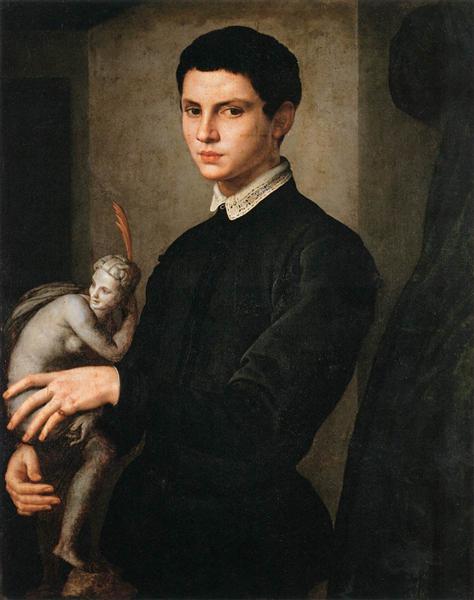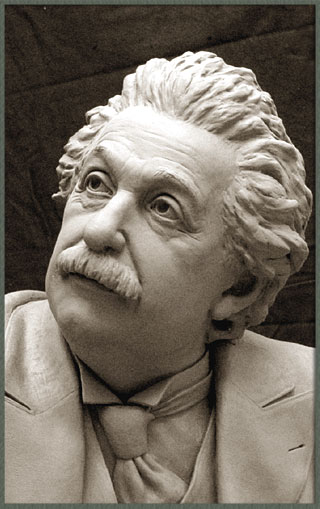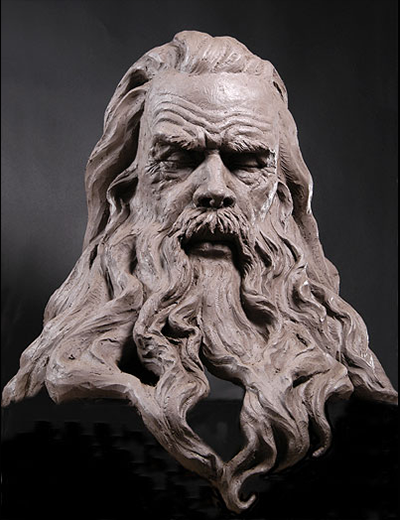Master of Faces: Explore the Globe of a Portrait Sculptor
Wiki Article
The Development of Sculptures: From Old to Modern
The Development of Sculptures: From Old to Modern. Bronze Sculptures.Sculpture, one of the earliest kinds of art, has actually been an important component of human world for centuries. From the old civilizations of Egypt and Greece to the modern-day era, sculptures have actually evolved, showing adjustments in creative methods, materials, and cultural influences. This trip through time traces the advancement of sculptures, exploring the shifts in vogue, topic, and imaginative expression.
Beginning with the old world, sculptures crafted from stone and later on bronze caught the significance of deities, rulers, and day-to-day life. The Renaissance duration saw a resurgence of classical sculpting techniques, as musicians looked for to mimic the elegant forms of ancient Greek and Roman sculptures (Robert C Hitchcock Sculptor). In the contemporary era, musicians challenged conventional borders, welcoming abstraction and trial and error with new products
This expedition will delve into the diverse evolution of sculptures, exposing the rich tapestry of artistic expression throughout different durations and cultures.

Old Sculptures: From Rock to Bronze
Ancient sculptures transitioned from being carved out of rock to being cast in bronze. This shift marked a substantial advancement in the art of sculpture, permitting better refinement and detail in the finished works. Rock sculptures, while impressive in their very own right, were restricted by the nature of the material. Stone called for extensive shaping and carving, usually resulting in an extra simplified depiction of the topic.The intro of bronze as a medium for sculptures brought about a revolution in creative expression. Bronze supplied artists the chance to produce lifelike and intricate kinds that were not possible with stone. The procedure of casting bronze allowed for the development of several duplicates of a sculpture, enabling larger circulation and preservation of these imaginative work of arts.
The change from stone to bronze also saw a shift in the subject of sculptures. While rock sculptures primarily illustrated gods, goddesses, and mythological figures, bronze sculptures started to reflect a more comprehensive variety of subjects, including day-to-day people and pets. This growth of subject showcased the versatility and adaptability of the bronze tool.
Renaissance Rebirth: Forming in the Timeless Style
The Renaissance rebirth of sculpture saw a rebirth in the classical design, structure upon the innovations made during the change from rock to bronze in old sculptures. During this period, musicians looked for to recreate the classic aesthetic and suitables of elegance that were prevalent in ancient Greek and Roman sculptures.Among the vital features of the Renaissance resurgence was the focus on naturalism and the human type. Carvers like Donatello and Michelangelo aim to capture the physiological information and expressions of their topics with unmatched accuracy. They researched the body and included their monitorings right into their sculptures, causing realistic and natural depictions.
Another important facet of the Renaissance rebirth was the exploration of perspective and depth. Artists utilized techniques such as contrapposto, where the weight of the body is moved away, developing a feeling of activity and dynamism. They likewise explore various products, consisting of marble and bronze, to accomplish a level of sophistication and ins and out in their sculptures.

Innovation and the Avant-Garde: Breaking Traditional Limits
Throughout the Modernism and Avant-Garde activities, artists pressed the limits of standard creative conventions. This period, which emerged in the late 19th and very early 20th centuries, saw a significant shift in the way musicians approached sculpture. Rejecting the notion of art as simple replica, modernist artists looked for to discover new types, products, and ideas.
One of the essential attributes of modernist sculpture was the focus on abstraction. Sculptors relocated away from realistic representations and instead concentrated on recording the significance of the topic with streamlined forms and geometric forms. This departure from conventional representation allowed artists to reveal their feelings and concepts in a more individual and subjective manner.

Contemporary Sculptures: Discovering New Materials and Concepts
With a concentrate on discovering new products and concepts, modern sculptures have reinvented the area of art. Artists today are pressing the borders of typical sculpture by experimenting and using cutting-edge products with abstract principles. These sculptures test traditional ideas of significance, type, and materiality, welcoming customers to take part in a brand-new and provocative creative experience.Contemporary carvers are accepting a wide variety of products, including plastic, glass, steel, and even natural matter. They are not limited to the conventional medium of stone or clay, enabling greater civil liberty and testing. This shift towards unusual materials has opened new opportunities for musicians to produce sculptures that are dynamic, interactive, and aesthetically striking.
Along with checking out new products, modern sculptures additionally explore complicated and abstract principles. Artists are currently exploring motifs such as identity, social problems, and the atmosphere, using sculpture as a powerful tool for social commentary and self-questioning. These sculptures test viewers to think seriously and engage with art on a much deeper degree, triggering conversations and prompting psychological feedbacks.
Global Impacts: Sculptural Traditions From All Over The World
Sculptural customs from numerous areas of the globe have actually significantly formed the advancement of sculptures throughout background. The global impacts on sculpture have varied and have actually added to the splendor and variety of imaginative expressions. From the ancient human beings of Egypt, Greece, and Rome to the elaborate makings of dig this Asian societies, each region has created its distinct sculptural practices that have affected artists throughout time.In old Egypt, sculptures were produced largely for funerary and religious functions. The iconic sculptures of pharaohs and gods, such as the Great Sphinx and the breast of Queen Nefertiti, display the Egyptians' proficiency of rock sculpting and their belief in the afterlife.

In old Rome, sculpture offered both political and artistic objectives. Roman sculptures commonly depicted emperors, generals, and mythological numbers, mirroring the power and splendour of the realm. The marble statuary of Augustus of Prima Porta and the monumental Arch of Constantine are remarkable examples of Roman sculptural accomplishments.
Asian sculptural traditions, particularly in India, China, and Japan, have also had a profound impact on the evolution of sculptures. Japanese sculptures, influenced by Buddhism, stress simpleness and peace, seen in the calm statuaries of Buddha and the stylish art of bonsai.
The global impacts on sculpture continue to develop in the modern-day age. As we look to the future, it is certain that the international influences on sculpture will certainly continue to form and redefine this ancient art kind.
Conclusion
In conclusion, the advancement of sculptures has seen a change from ancient rock and bronze works to the timeless resurgence during the Renaissance. This was adhered to by the breaking of conventional borders with modernism and the progressive motion. Today, contemporary sculptures explore brand-new products and concepts, while additionally drawing ideas from worldwide sculptural customs. The journey of sculptures mirrors the ever-changing creative expressions and cultural impacts throughout history.From the ancient civilizations of Egypt and Greece to the contemporary era, sculptures have actually advanced, mirroring adjustments in creative techniques, products, and social influences.Starting with the old world, sculptures crafted from rock and later bronze recorded the essence of divine beings, rulers, and everyday life.Ancient sculptures transitioned from being carved out of stone to being cast in bronze. While rock sculptures mostly depicted gods, goddesses, and mythological figures, bronze sculptures began to mirror a more comprehensive range of subjects, including daily individuals and pets.In conclusion, the evolution of sculptures has actually seen a change from old rock and bronze functions to the classic resurgence during the Renaissance.
Report this wiki page